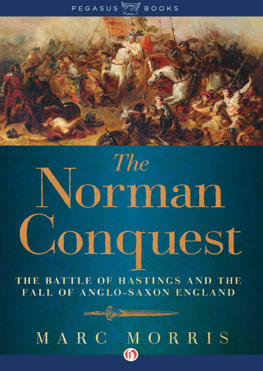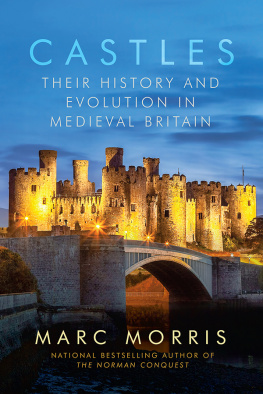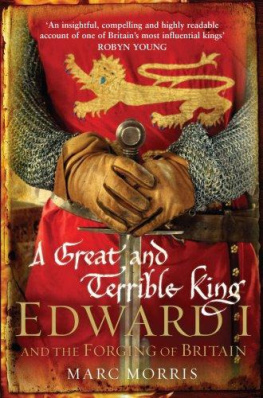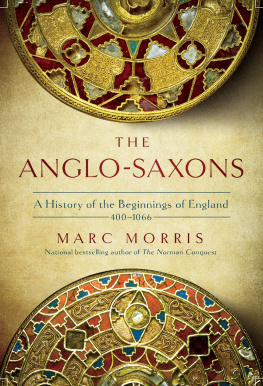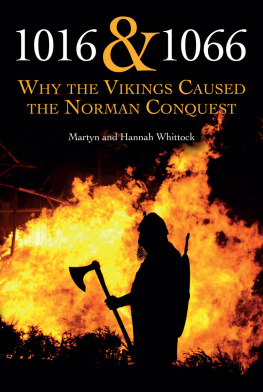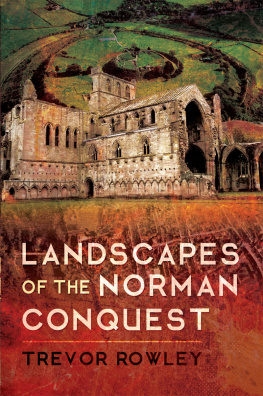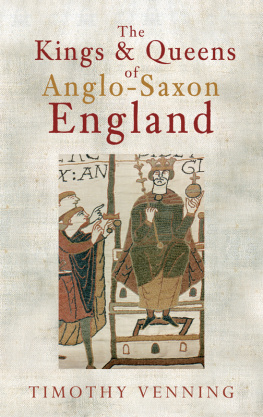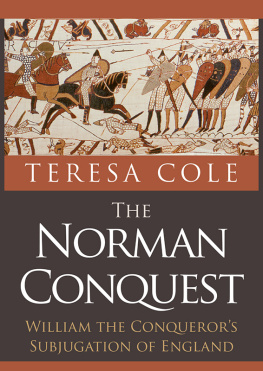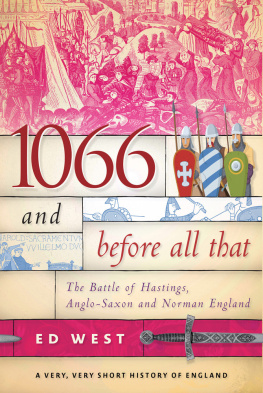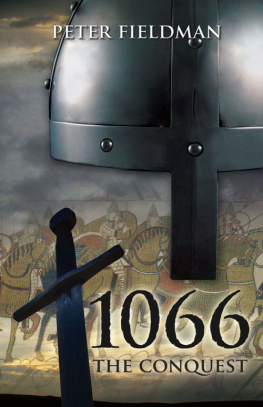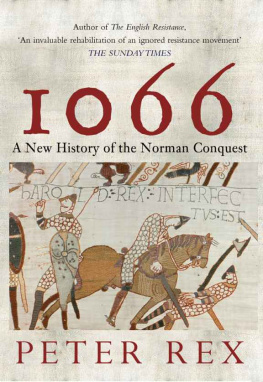The
Norman Conquest
THE BATTLE OF HASTINGS AND THE FALL OF ANGLO-SAXON ENGLAND
MARC MORRIS

PEGASUS BOOKS
NEW YORK LONDON
To Peter:
my prince
1
The Man Who Would Be King
T he Bayeux Tapestry begins with three men in conversation, two standing and one seated. The standing men are not identified, but the seated figure carries a sceptre and wears a crown, while above his head the caption reads Edward Rex King Edward. Today he is known, more conveniently, as Edward the Confessor. His memorable by name arose in 1161, almost a hundred years after his death, when he was recognized as a saint by the pope. The pope was satisfied that Edward had performed miracles while alive, and that miracles had continued to occur after his death.
From the record of events in his own day, Edward does not appear to have been particularly saintly. There are suggestions in contemporary sources that he may have been more pious than most, but otherwise he seems to have cut a typical, indeed unexceptional, figure. He lived a fairly long life by medieval standards, dying in his early sixties. On the Tapestry he is shown as an old man with a long white beard, and his death forms one of the most important scenes. The date of his death 5 January 1066 is enough to indicate that he is crucial to our story. But in order to understand that story properly, we need to travel back to his youth, and explore how he came to be king of England in the first place. It is a remarkable tale the one aspect of his career that is indubitably miraculous.
England at the start of the eleventh century was a country both old and new. Old, because its roots stretched back into a distant past, when tribes of Germanic peoples, now collectively known as the Anglo-Saxons, had begun migrating to the island of Britain in the
But in the ninth century, this galaxy of competing kingdoms was destroyed by new invaders the Vikings. Despite attempts to rehabilitate them in recent times, the Vikings, with their lust for blood and glory and their gruesome human sacrifices, were not surprisingly regarded with horror by the settled Anglo-Saxons, who witnessed their monasteries being torched, their gold and silver treasures being looted, their precious illuminated manuscripts being destroyed, their young men and women being led away as slaves, and anyone else who stood in the way being mercilessly put to the sword. One by one the several kingdoms of the Anglo-Saxons fell: first Northumbria, then East Anglia, and finally even Mercia, the mightiest kingdom of all, collapsed in the face of the Viking onslaught.
But the kingdom of Wessex endured. Led first by the celebrated King Alfred the Great, and afterwards by his sons and grandsons, the people of the most southerly Anglo-Saxon kingdom at first doggedly defended themselves, and then successfully fought back. And not just in Wessex. During the first half of the tenth century, the West Saxon kings became the conquerors, pushing their frontier northwards, driving the Vikings into retreat, and bringing the neighbouring peoples of Mercia and East Anglia under their dominion. In 954, the Viking capital of York finally fell, and the lands north of the Humber were also annexed by the heirs of Alfred.
In driving the Vikings out, the kings of Wessex had forged a powerful new state. As their armies had advanced, their conquests had been cemented by the foundation of fortified towns, known as burhs (boroughs), around which they had established new administrative districts, or shires. Where there had once been several, competing kingdoms there was now a single source of authority. Henceforth the various Anglo-Saxon peoples would swear an oath to one king, and live under one law; they would use a single silver coinage and worship a single Christian God.
But, having conquered, the kings of Wessex took care not to be seen as conquerors. Anxious not to alienate his new Anglian subjects, Alfred had urged them to forget their former differences, and emphasized the common Christian culture that united them against the pagan hordes they were fighting. Diplomatically he was not a rex saxonum in his charters but a rex angul-saxonum, and his people were collectively described as the angelcynn. In a further effort to promote unity, he also stressed their common history, commissioning a chronicle that would circulate around the kingdoms major monasteries. Remarkably, this Anglo-Saxon Chronicle (as it was later known) was written not in Latin, as was the practice in virtually every other literate corner of Europe, but in the everyday language that people spoke. By the end of the tenth century, this language had a name for the new state: it was the land of the Angles, Engla lond.
Such was the kingdom, at once ancient and modern, that Edward the Confessor would eventually inherit. Dynastically speaking, his credentials for doing so were impeccable, for he had been born into the royal family at some point between 1002 and 1005, a direct descendant of King Alfred (his great-great-great-grandfather). Statistically speaking, however, Edwards chances must have seemed vanishingly slim, for he was the product of a second marriage: six older half-brothers were already waiting in line ahead of him in the queue for the succession. And yet, at the time of Edwards arrival, it would have been rash to have placed a bet on any particular candidate, because the world was once again being turned upside down. A decade or so earlier, the Vikings had come back.
They came at first in small parties, as they had done in the past, testing the waters, raiding and then retreating with their loot. But in 991 a large Viking horde had landed at Maldon in Essex and defeated the overconfident English army that had set out to meet them, and from then on the Vikings had returned to burn, pillage and plunder on a more or less annual basis; by the time of Edwards birth, the violence had become almost a matter of routine. Under the year 1006, the Anglo-Saxon Chronicle records that the Vikings did as they had been wont to do: they harried, burned and slew as they went. The citizens of Winchester, Wessexs ancient capital, could watch an arrogant and confident host passing their gates on its way
Why did the powerful kingdom of England, so good at expelling the Vikings in the tenth century, fail to repel them in the eleventh? In part it was because the Vikings who came in the second wave did so as part of bigger, better equipped and better organized armies: the giant circular fortresses they built around this time in their homelands at Trelleborg and elsewhere give some indication of their power. But Viking success was also caused by an abject failure of leadership in English society, beginning at the very top, with Edwards father, thelred.
Just as Edward has his famous cognomen the Confessor, so too his father will forever be remembered as thelred the Unready. As it stands, unready is a pretty fair description of thelreds level of preparedness for Viking attack and kingship in general. In actual fact, however, unready is a modern misreading of his original nickname, which was the Old English word unraed, meaning illcounselled or ill-advised. (It was a pun on the kings Christian name, which meant noble counsel.)

